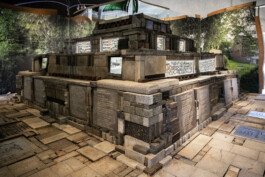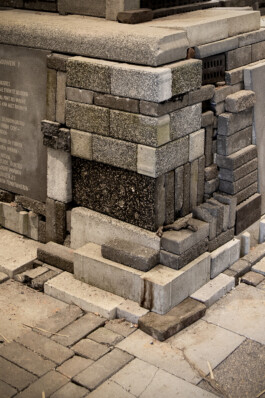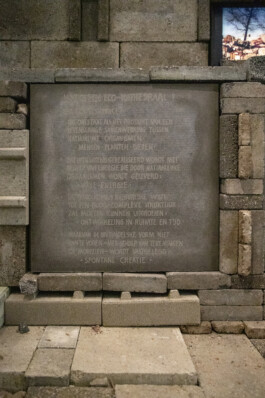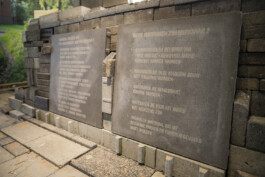








In the 1970s, Louis Guillaume Le Roy (1924-2012) became known for the idea of the wild garden. Recently, this unruly artist and self-proclaimed ‘ecotect’ has been rediscovered. His plea for a creative interaction between plants, animals and humans not only stretched the boundaries of art; it also anticipated today’s ecological thinking.
His gardens are not so much designed as gradually self-developing on a foundation of stacked construction waste. Residents and users are actively involved in the stacking and sometimes in the sowing and planting of the natural ruins. After that, maintenance is limited to what is absolutely necessary. Time and the natural growth process are given plenty of room.
The Eco-Cathedral in Mildam, his most famous work, has been continuously ‘constructed’ since the 1960s, using rubble – tiles, bricks and beams – from the nearby municipality of Heerenveen. Plants, animals and people continue to work together and the complexity of the ecosystem grows, forming an ideal habitat for numerous insects, birds, amphibians and other animals.
The current interest in Le Roy fits in with thinking about the future of garden and landscape archives, which are now often inaccessible or even threatened. Together with various partners and Het Nieuwe Instituut, the project is investigating a long-term perspective for important legacies such as that of Louis Le Roy.
The Eco-Cathedral, Installation view, 2022
Designing the Social,
Het Nieuwe Instituut, Rotterdam, NL
Concept, research, design and video by Minji Choi
Research and texts by Joost Emmerik
Advice on collection material by Suzanne Mulder
Art direction by Frank Bruggeman
Graphic layer by David Bennewith
With thanks to Iris Vogt, Mark Vogt, Martha Kist, Tjeerd de Jong, Tresoar – Frisian Historical and Literary Centre, Stichting TIJD, Piet Vollaard, Rob Hendriks, Marcel Prins, Roelof Koster, Peter Wouda, Gemeente Rotterdam, Stadskwekerij Rotterdam
Photo by Minji Choi
© Minji Choi 2024